Iñaki Bonillas – La Idea del Norte
4.10 – 19.11 / 2014
PROJECTESD, Barcelona
The ideas of North and South belong to that group of abstract ideas which nearly always are defined by negation: the south is everything the north isn’t, and vice versa. The south is often imagined, from the north, as a warm, ebullient, colourful, exuberant and fertile space. Meanwhile, from the south, the north is above all cold, white, silent and endless. Iñaki Bonillas set himself the task of exploring, in these works, his own ideas which he, a man from the south, had of the north. To do this, he undertook a journey, but it was one around his room. He thus went exploring into the furthest corner of the world, using only the tools he had closest to hand: photocopier, dinner plates, DVDs, books and, of course, the internet. From this research, the following new works emerged:
Routes
This map, put together from the routes taken by the explorers who attempted to be first to conquer the North Pole, acts as an introduction to the show by laying out the territory to be explored in the exhibition hall. The land which remains unknown is sparkling and inscrutable, and its fluorescent tone recalls the twinkling greens of the aurora borealis. Meanwhile the ground already trodden ceases to have this halo of mystery and becomes the colour of paper. The splash of colour also has, to the touch, the porous texture of snow or frost, in an attempt to reproduce the sensation the explorers would have had on breaking through the ice in search of passages to the north.
Questions
One of the elements which turn the world of the north into a total unknown for those from the south is undoubtedly the use not only of different languages but in many cases alphabets, which to southern eyes seem incomprehensible and enigmatic. Using poems by writers of the north, Bonillas poses questions where the ‘universal’ interrogative sign is all that links the viewer from the south with the language used.The words thus become accessible only as images, as the characters and unfathomable accents, having no meaning, reveal themselves to be purely shapes. Vertical reading also means that the movement is from above to below; in other words, from north to south, and back again.
Heads
The north is not just a geographical location but also the place at the top of everything, the highest point. In the world as well as in the body. The north is also, metaphorically, what is rational; as opposed to the sensuality of the south. As a result it is the site of isolation par excellence; far from the noise and needs of everyday. The south would be the stomach, the feet; the north, the head. A man’s head (a woman’s feet), especially that of a bald man, as if it were a globe where the only thing you could see was the north pole. The vertical line also talks about a man that is pure head, pure thought.
Streets
Some of these streets with impossibly northern names are in fact in the area of Mexico City where the artist lives. The idea was to make a map of a territory based on a map of a different territory, one almost geographically opposite. A curious contrast: walking along Yukon Street in Cuauhtémoc under the beating Ecuadorian sun. And so it is really a fragmented and impossible map; there is no continuity from one quadrant to another, almost like it was for those who attempted for centuries to navigate the so-called Northwest Passage and never managed to find the way to the other side.
Peaks
This work is inspired by Carl Andre’s project for the famous ‘Xerox Book’, which consisted of a progressive accumulation, page by page, of small squares which simulated sculptural bodies. But for an artist who mainly works in photography, such as Bonillas, these flat shapes make a connection with the empty frames of a film negative, and seem to cry out to be filled by an image. In this instance, the artist decided to occupy these spaces with photographs which point as high up as possible: the peaks of the highest mountains in the world. And so the conquest of a snowy mountain (to be climbed) becomes also the conquest of a blank page (to be filled).
Dioramas
Nowhere is the idea of north so close to reality and yet so remote as in a museum diorama: the bears are there, the snow and ice too, but nothing of this structure of blue-painted concrete can truly express the experience of glacial life. From images found on the internet, Bonillas brings the cold to these views by giving them an extreme treatment: all the colour and brightness settings are reduced to -100; in other words they are taken to the point where the image is on the verge of disappearance, as if dissolving in the permanent night of the North Pole.
Interiors
Interiors is Woody Allen’s homage to Bergman (again, the south looking to the north). A woman tries to shut out all communication with the world, closing off even the tiniest passage of air and light into her apartment with tape, ‘insulating’ tape in fact. Several stills from the film – in which the character’s hands are seen covering the window frames with tape – are used by Bonillas to talk of the isolation of life at the edge of the North Pole. The quality of the images – in which the white has disappeared – is achieved in the darkroom (another hermetic space) using a technique where the positive and negative are mixed together.
Ice
An image which is typical of the poles is that of floes recently detached from the ice platforms. Like drifting ships, the massive chunks of ice, broken away from the pole, float and collide with each other. This is the idea Bonillas sought to reproduce by using the photocopier’s glass as if it were the sea and the shattered pieces of white crockery as the moving icebergs. Curiously, the brand name of the plates was Alaska. The photocopy’s texture gives the images a blurred quality, as if of tide and movement. Because of thawing, the Arctic Ocean was finally navigated. An image similar to what we see here.
Fugue
An homage to the individual who was the inspiration for the entire project: the most brilliant of pianists, the Canadian Glenn Gould, someone who was definitely unfit for life in the south. Such was the north his ideal habitat that he spent months of his life producing a radio documentary, ‘The Idea of North’, where different voices, in a fugue, describe the details of life in the north. From images taken from films in which Gould appeared, and views of northern scenes, Bonillas looked to build a narrative in counterpoint, offering an individual idea of north while emulating the original form of the piece which Gould composed in 1962, So you Want to Write a Fugue?
Text: María Minera Translation: Richard Thomson
Iñaki Bonillas (Mexico, 1981) lives and works in Mexico City. In 2014 he created Words and Photos, a comissioned web project for the Dia Art Foundation, New York. He took part at the 50th Venice Biennial (2003) and 30th São Paulo Biennial (2012). He had solo shows at institutions sucha as La Virreina Centre de la Imatge, Barcelona (2012), Mies van der Rohe Pavilion, Barcelona (2005), or MUHKA, Antwerp (2003). He has participated part in numerous group exhibitions: at The Power Plant, Toronto, Canada (2003), San Diego Museum of Art, California (2002), Fundación Jumex, Mexico City, Bard College, New York and Prage Biennial, Czech Republic (2005), Claremont Museum of Art, California (2007), Hessenhuis-Middleheimmuseum, Antwerp (2008), La Maison Rouge, Paris, MUAC, Mexico DF (2008), Kunstmuseum Basel, Basel and MACBA, Barcelona (both in 2009), MUSAC, León (2010), ASU Art Museum, Phoenix, Arizona, FRAC île de France and Fondation Cartier, both in Paris (2013) and the Salzburger Kunstverein, Austria (2014).
.


 Home
Home
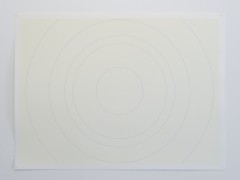
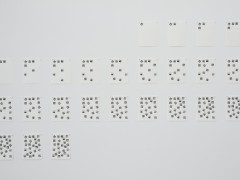
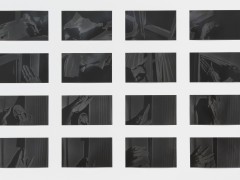
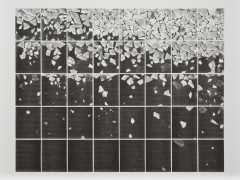
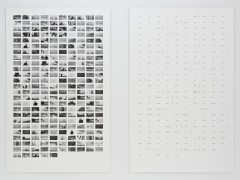
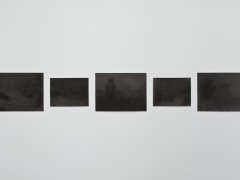
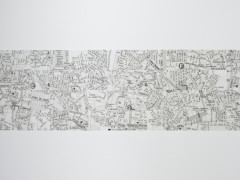
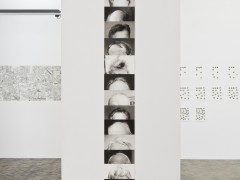
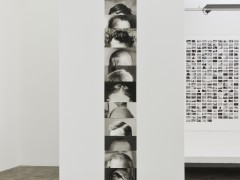
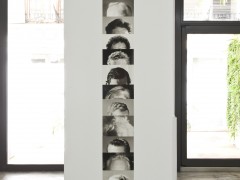
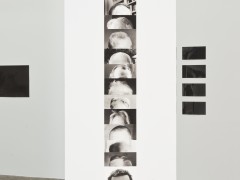
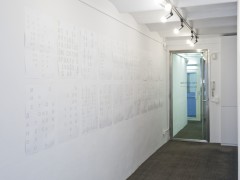
![Installation view: La idea del Norte [The Idea of North],](http://www.arte-sur.org/wp-content/uploads/2014/10/I.Bonillas_La-Idea-del-Norte-1-240x180.jpg)
![Installation view: La idea del Norte [The Idea of North],](http://www.arte-sur.org/wp-content/uploads/2014/10/I.Bonillas_La-Idea-del-Norte-2-240x180.jpg)
![Installation view: La idea del Norte [The Idea of North],](http://www.arte-sur.org/wp-content/uploads/2014/10/I.Bonillas_La-Idea-del-Norte-3-240x180.jpg)
![Installation view: La idea del Norte [The Idea of North],](http://www.arte-sur.org/wp-content/uploads/2014/10/I.Bonillas_La-Idea-del-Norte-4-240x180.jpg)
![Installation view: La idea del Norte [The Idea of North],](http://www.arte-sur.org/wp-content/uploads/2014/10/I.Bonillas_La-Idea-del-Norte-5-240x180.jpg)
![Installation view: La idea del Norte [The Idea of North],](http://www.arte-sur.org/wp-content/uploads/2014/10/I.Bonillas_La-Idea-del-Norte-6-240x180.jpg)
![Installation view: La idea del Norte [The Idea of North],](http://www.arte-sur.org/wp-content/uploads/2014/10/I.Bonillas_La-Idea-del-Norte-7-240x180.jpg)
![Installation view: La idea del Norte [The Idea of North],](http://www.arte-sur.org/wp-content/uploads/2014/10/I.Bonillas_La-Idea-del-Norte-8-240x180.jpg)
![Installation view: La idea del Norte [The Idea of North],](http://www.arte-sur.org/wp-content/uploads/2014/10/I.Bonillas_La-Idea-del-Norte-9-240x180.jpg)
![Installation view: La idea del Norte [The Idea of North],](http://www.arte-sur.org/wp-content/uploads/2014/10/I.Bonillas_La-Idea-del-Norte-10-240x180.jpg)
![Installation view: La idea del Norte [The Idea of North],](http://www.arte-sur.org/wp-content/uploads/2014/10/I.Bonillas_La-Idea-del-Norte-11-240x180.jpg)
![Installation view: La idea del Norte [The Idea of North],](http://www.arte-sur.org/wp-content/uploads/2014/10/I.Bonillas_La-Idea-del-Norte-12-240x180.jpg)
![Installation view: La idea del Norte [The Idea of North],](http://www.arte-sur.org/wp-content/uploads/2014/10/I.Bonillas_La-Idea-del-Norte-13-240x180.jpg)